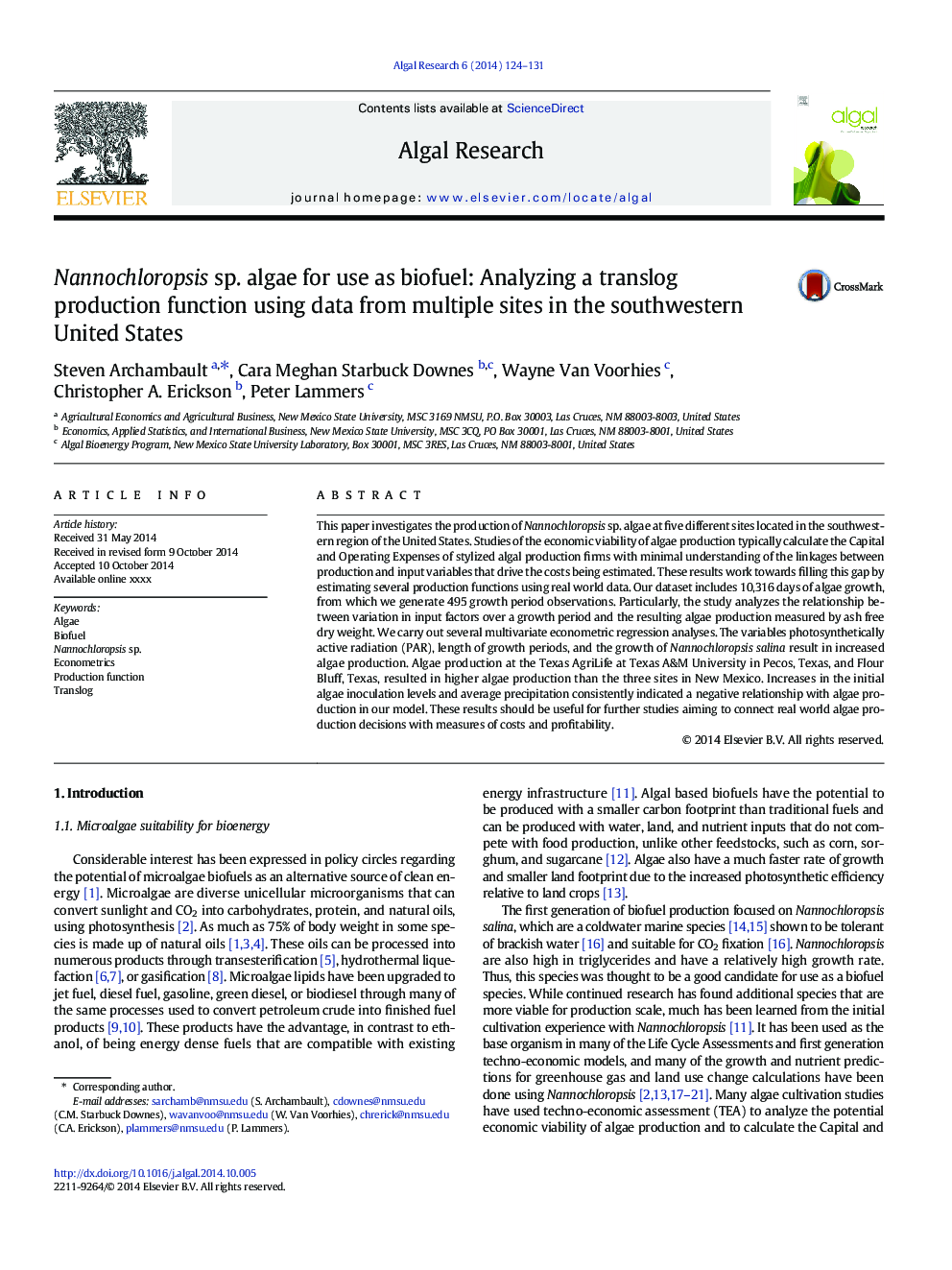| Article ID | Journal | Published Year | Pages | File Type |
|---|---|---|---|---|
| 10687507 | Algal Research | 2014 | 8 Pages |
Abstract
This paper investigates the production of Nannochloropsis sp. algae at five different sites located in the southwestern region of the United States. Studies of the economic viability of algae production typically calculate the Capital and Operating Expenses of stylized algal production firms with minimal understanding of the linkages between production and input variables that drive the costs being estimated. These results work towards filling this gap by estimating several production functions using real world data. Our dataset includes 10,316Â days of algae growth, from which we generate 495 growth period observations. Particularly, the study analyzes the relationship between variation in input factors over a growth period and the resulting algae production measured by ash free dry weight. We carry out several multivariate econometric regression analyses. The variables photosynthetically active radiation (PAR), length of growth periods, and the growth of Nannochloropsis salina result in increased algae production. Algae production at the Texas AgriLife at Texas A&M University in Pecos, Texas, and Flour Bluff, Texas, resulted in higher algae production than the three sites in New Mexico. Increases in the initial algae inoculation levels and average precipitation consistently indicated a negative relationship with algae production in our model. These results should be useful for further studies aiming to connect real world algae production decisions with measures of costs and profitability.
Related Topics
Physical Sciences and Engineering
Energy
Renewable Energy, Sustainability and the Environment
Authors
Steven Archambault, Cara Meghan Starbuck Downes, Wayne Van Voorhies, Christopher A. Erickson, Peter Lammers,
